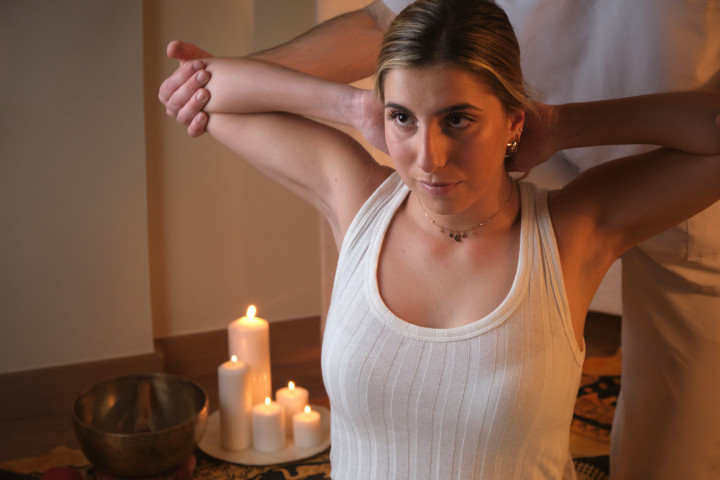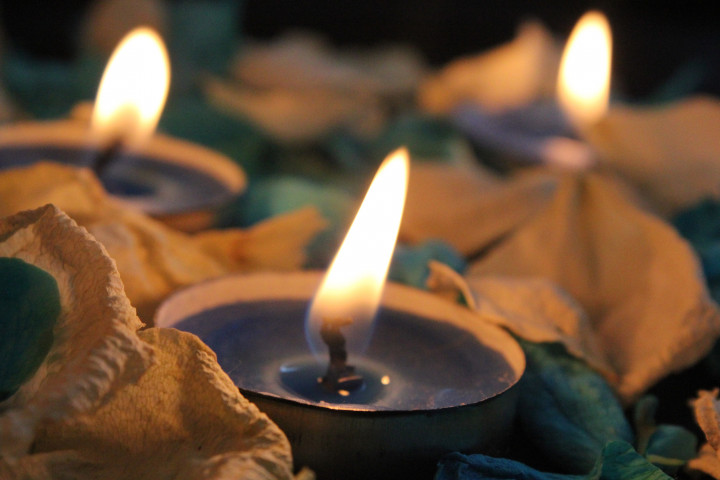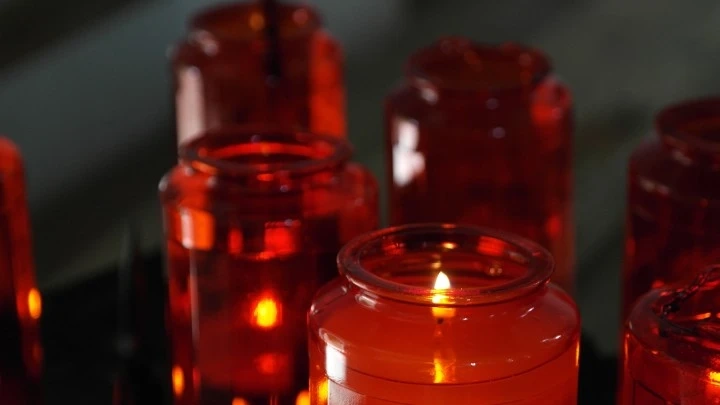Psychology of Candles - How the Science of Aromatherapy Can Help You Achieve Total Relaxation and Inner Peace
Updated on 26th March, 2023
The History of Candles
Candles have been used for centuries for lighting, warmth, and decoration. The ancient Egyptians are credited with creating the first candles around 3,000 BC. These early candles were made from beeswax and tallow and were used primarily for religious ceremonies. Over time, the use of candles spread to other cultures, and different materials were used to create them, such as animal fat, vegetable wax, and paraffin wax. But the psychology of candles goes beyond their practical uses. Throughout history, candles have also been associated with symbolism and ritual. For example, in many cultures, lighting candles is seen as a way to honor the dead or to bring good luck. The flickering light of a candle has a calming effect on the mind and can create a sense of relaxation and comfort.

In modern times, candles continue to be popular, not just for their practical uses but also for their psychological benefits. Many people use candles as a way to create a soothing and relaxing atmosphere in their homes. The scent of a candle can evoke memories or create a certain mood, such as relaxation or invigoration. The psychology of candles is complex and fascinating, and it is clear that they have a powerful impact on our minds and emotions.
The Science behind Candle Fragrances
Candles come in a wide variety of scents, from fruity and floral to spicy and woody. But have you ever wondered how these scents are created and why they have such a powerful effect on our emotions? The science behind candle fragrances is complex and fascinating, and it is closely tied to the psychology of candles. The scent of a candle is created by adding fragrance oils to the wax. These oils are typically made from a combination of natural and synthetic compounds that are carefully blended together to create a specific scent profile. The type and quality of the fragrance oils used can greatly affect the scent and quality of the candle.
But why do certain scents have such a powerful effect on our emotions? The answer lies in our olfactory system, which is responsible for our sense of smell. When we smell a candle, the scent molecules travel through the air and enter our nasal cavity, where they stimulate the olfactory receptors. These receptors send signals to the brain, which then interprets the scent and creates an emotional response. Different scents can have different effects on our emotions. For example, lavender is often used in candles for its calming and relaxing properties, while peppermint is used for its invigorating and energizing effects. The psychology of candles is closely tied to the science behind fragrance, and understanding this connection can help us make more informed choices about the candles we use in our homes.
Why are Candles Relaxing? The Role of Candles in Meditation
Meditation is a practice that has been used for centuries to promote relaxation, focus, and spiritual growth. Candles have long been used as a tool to enhance the meditation experience. The soft, flickering light of a candle can help create a peaceful and calming environment, and the act of lighting a candle can be a ritual that signals the start of a meditation session. The role of candles in meditation is closely tied to the psychology of candles. The calming effect of the light can help reduce stress and promote relaxation, while the scent of the candle can help create a certain mood or atmosphere. Many people choose to use candles with specific scents, such as lavender or sandalwood, to enhance the meditative experience.

In addition to their psychological benefits, candles can also be used as a focal point during meditation. Some people find it helpful to focus their gaze on the flame of a candle, using it as a point of concentration to help quiet the mind and enter a meditative state. There are many different types of candles that can be used for meditation, from traditional beeswax candles to more modern soy-based candles. It is important to choose candles that are made from high-quality, natural ingredients and that do not contain any artificial fragrances or harmful chemicals.
The Role of Scent in Triggering Emotional Memories and How Candles Can Be Used to Enhance Nostalgia
The sense of smell is powerful and has the ability to trigger emotional memories and associations in a way that other senses cannot. Scents can transport us back to specific moments in time, evoke powerful emotions and create feelings of nostalgia. Candles, with their variety of scents and ability to create a warm ambiance, are the perfect tool to enhance this effect and create a personalized nostalgic experience. In a 2004 study, researchers found that odors were more likely to trigger emotional memories than visual or verbal cues. The researchers concluded that scent-evoked memories tend to be more vivid, emotional and rich in sensory detail than memories triggered by other cues. This is because the olfactory bulb, the part of the brain that processes smell, is closely connected to the amygdala and hippocampus, the brain areas responsible for emotions and memory, respectively.

Candles can be used to enhance nostalgia by utilizing scents that are associated with specific memories or emotions. For example, the scent of cinnamon may evoke memories of holiday baking, while lavender may evoke memories of a relaxing spa day. By burning candles with these scents, individuals can create a sensory experience that transports them back to those specific moments in time and evoke feelings of nostalgia and comfort. One study found that nostalgia can have positive psychological effects, including increasing feelings of social connectedness and reducing feelings of loneliness. By incorporating candles into daily life and using them to enhance nostalgic experiences, individuals may be able to reap these psychological benefits and improve their overall well-being.
The Impact of Candlelight on Social Interaction and Romantic Relationships
Candlelight has been associated with romantic and intimate settings for centuries, but recent research suggests that it may have a broader impact on social interaction beyond just romantic relationships. In this article, we will explore the impact of candlelight on social interaction and how it may enhance romantic relationships. Candlelight has a calming effect on individuals and can create a relaxed and comfortable atmosphere, which can encourage social interaction. A 2012 study found that individuals in dimly lit rooms, such as those illuminated by candles, were more likely to engage in intimate conversations and self-disclosure than those in brightly lit rooms. This suggests that candlelight can create an environment that is conducive to social bonding and interpersonal connection.
In romantic relationships, candlelight has been found to increase feelings of intimacy and romantic attraction. A 2017 study found that participants who were exposed to candlelight reported feeling more romantic and sexually attracted to their partner than those who were not exposed to candlelight. The researchers concluded that candlelight creates a romantic and intimate environment that enhances feelings of love and connection between partners. Beyond romantic relationships, candlelight may also have a positive impact on group interactions. A 2014 study found that groups of individuals in a dimly lit room, such as one illuminated by candles, reported feeling more connected and cooperative than those in brightly lit rooms. This suggests that candlelight may be a useful tool in creating a positive and collaborative environment for group interactions.
The Psychology of Candle Hoarding and the Potential Benefits and Drawbacks of This Behavior
Candle hoarding, or the habit of accumulating large quantities of candles, is a behavior that has become increasingly common in recent years. While it may seem harmless, this behavior can have both positive and negative effects on one's mental and emotional well-being. In this article, we will explore the psychology of candle hoarding and the potential benefits and drawbacks of this behavior. Candles are often associated with relaxation, comfort, and mood enhancement. They can create a soothing atmosphere and serve as a form of self-care. For some individuals, the act of collecting and hoarding candles can be a way of fulfilling these needs. The process of searching for and acquiring candles can be rewarding, and the act of lighting candles can provide a sense of comfort and relaxation.
However, there are potential drawbacks to this behavior as well. Hoarding candles can become an obsessive behavior, causing individuals to accumulate excessive amounts of candles that they may never use. This can lead to clutter and feelings of overwhelm, which can have a negative impact on mental health. Additionally, excessive candle burning can pose a fire hazard and may cause respiratory problems if candles are not burned in well-ventilated areas. In terms of mental health, candle hoarding can provide a sense of control and comfort for some individuals, but it can also be a manifestation of anxiety or other underlying psychological issues. It is important to distinguish between healthy and harmful hoarding behaviors, and seek professional help if hoarding is negatively impacting one's daily life and well-being.
The Relationship Between Candle Use and Better Sleep Hygiene
Sleep is essential for maintaining good physical and mental health, but many people struggle with getting a good night's sleep. While there are many factors that can contribute to poor sleep hygiene, candles may be a useful tool in promoting better sleep. In this article, we will explore the relationship between candle use and better sleep hygiene. Candles are often associated with relaxation and stress reduction. The gentle flicker of a flame can create a calming ambiance that can help individuals wind down and prepare for sleep. Additionally, some scents commonly found in candles, such as lavender and chamomile, are known for their calming and sleep-inducing properties.

Studies have found that exposure to light from electronic devices, such as phones and computers, can interfere with sleep by suppressing the production of melatonin, a hormone that regulates sleep-wake cycles. Candles, on the other hand, provide a soft and natural source of light that does not interfere with the body's natural production of melatonin. In addition to promoting relaxation and reducing exposure to electronic device light, the act of lighting candles can also serve as a ritual that signals to the brain that it is time to wind down and prepare for sleep. This can help individuals establish a consistent sleep routine and improve sleep hygiene.
It is important to note that not all candles are created equal. Some candles may contain harmful chemicals or produce excessive smoke, which can be detrimental to respiratory health. It is important to choose candles made from natural and non-toxic materials and to burn candles in a well-ventilated area.
The Psychological Impact of Different Candle Colors and How They Can be Used to Evoke Certain Moods
Candles come in a wide variety of colors, each with its own unique psychological impact. Color psychology is the study of how colors can affect our emotions and behavior, and this concept can be applied to candles as well. In this article, we will explore the psychological impact of different candle colors and how they can be used to evoke certain moods. White candles are often associated with purity, clarity, and simplicity. They can create a sense of calm and tranquility, making them a good choice for meditation or relaxation practices. White candles can also be used in rituals for purification or to represent new beginnings.
Red candles are known for their passionate and energizing qualities. They can evoke feelings of love, passion, and excitement, making them a popular choice for romantic occasions or when seeking to increase energy and motivation. Orange candles are associated with warmth, enthusiasm, and creativity. They can be used to create a lively and stimulating atmosphere, making them a good choice for social gatherings or creative projects. Yellow candles are often associated with happiness, optimism, and sunshine. They can create a cheerful and uplifting atmosphere, making them a good choice for times when you need a mood boost or want to create a sense of joy.

Green candles are known for their calming and balancing qualities. They can evoke feelings of nature, growth, and harmony, making them a good choice for meditation, relaxation, or when seeking to restore balance and calm. Blue candles are often associated with calmness, peace, and tranquility. They can create a serene and relaxing atmosphere, making them a good choice for bedtime rituals or when seeking to promote inner peace and relaxation. Purple candles are associated with luxury, wisdom, and spiritual awareness. They can create a sense of sophistication and elegance, making them a good choice for special occasions or when seeking to promote spiritual growth and awareness.
The Psychology of Candles in Enhancing Well-Being: A Case Study Approach
Over the past few decades, there has been a growing interest in the psychological benefits of candles. Research has shown that candles can have a positive effect on mood and well-being, and this has led to their increased use in therapeutic settings. The psychology of candles in enhancing well-being is a fascinating area of study that is gaining increasing attention from researchers and practitioners alike.
Case Study 1: Sarah is a busy professional who struggles with stress and anxiety. She started using candles in her home to create a calming atmosphere, and she noticed that it helped her to feel more relaxed and centered. According to a study conducted by the University of Westminster, the use of candles can help to reduce stress and anxiety by promoting relaxation and a sense of well-being (Hudson, 2017). Sarah's experience is a prime example of the positive impact that candles can have on psychological well-being.
Case Study 2: John is a retired veteran who suffers from PTSD. He participated in a candle therapy program at his local VA hospital, where he learned to use candles as a form of relaxation and meditation. A study conducted by the University of Minnesota found that the use of candles in combination with meditation can help to reduce symptoms of PTSD, including anxiety and hypervigilance (Rogers, 2014). John's experience highlights the potential benefits of candles in therapeutic settings.
Case Study 3: Maria is a college student who struggles with depression. She participated in a study that examined the effects of aromatherapy candles on mood and well-being. The study found that the use of candles with specific scents, such as lavender and vanilla, had a positive effect on Maria's mood and helped to reduce her symptoms of depression (Koulivand, Ghadiri, & Gorji, 2013). Maria's experience provides further evidence of the potential benefits of candles in improving mood and promoting well-being.
These case studies illustrate the potential benefits of candles in enhancing well-being. The soft glow of candles, combined with the use of specific scents, can help to create a calming and relaxing atmosphere that promotes feelings of peace and tranquility. Whether used in the home, in therapy settings, or in studies examining the effects of aromatherapy, candles have been shown to have a positive impact on mood and well-being.
In conclusion, the psychology of candles in enhancing well-being is an area of growing interest, with increasing research being conducted in this field. The use of candles in promoting relaxation, reducing stress and anxiety, and improving mood and well-being has been supported by scientific studies. As such, candles have become an increasingly popular tool for enhancing psychological well-being in both therapeutic and non-therapeutic settings. The psychology of candles in enhancing well-being is a fascinating area of study that offers many exciting possibilities for future research.